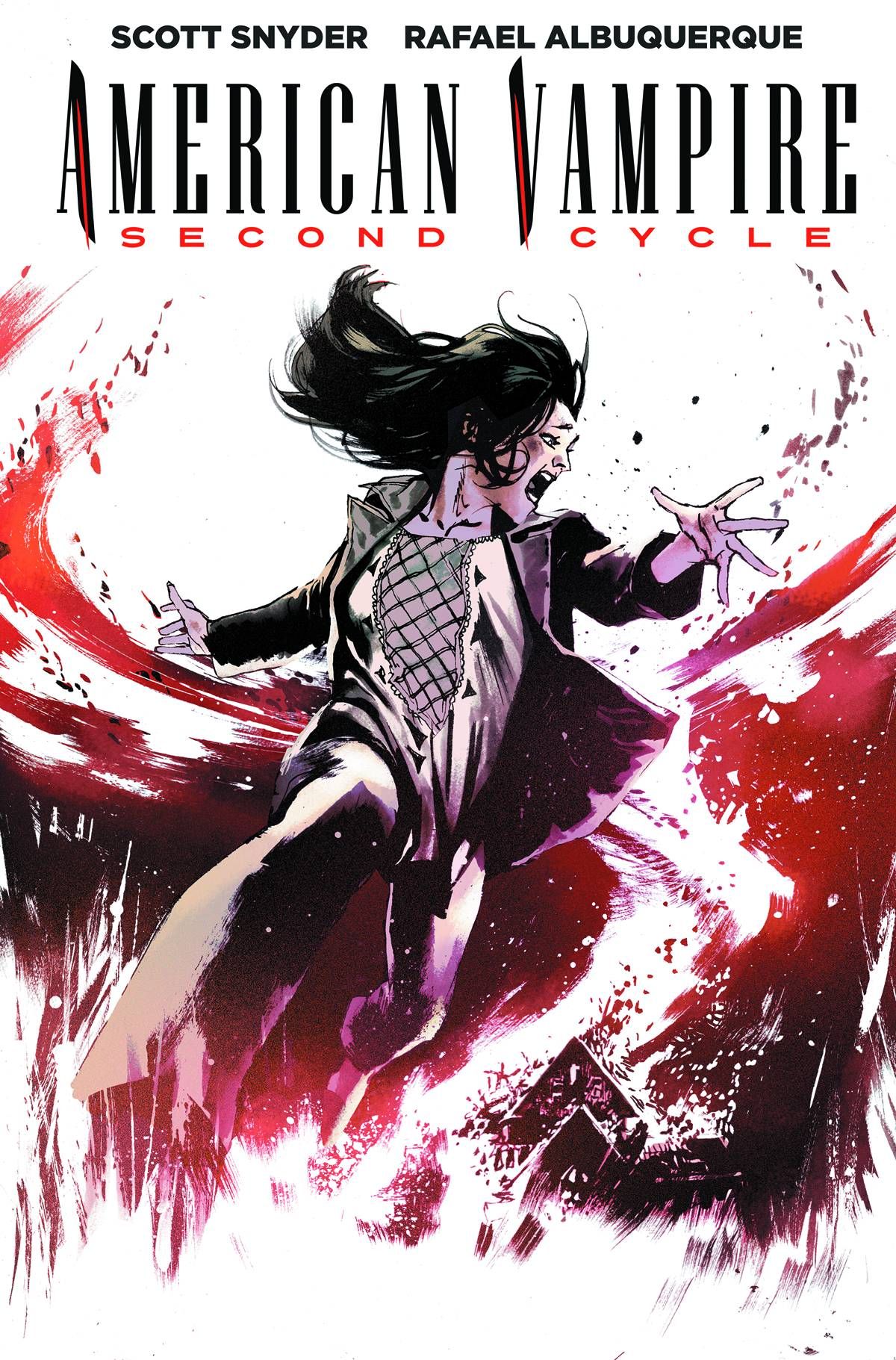Written by Scott Snyder, drawn by Rafael Albuquerque, colored by Dave McCaig and lettered by Steve Wands, "American Vampire: Second Cycle" #4 continues the saga of Pearl Jones and Skinner Sweet as they battle inexplicable evil in America's heartland.
Snyder and Albuquerque continue to reveal bits about the mythology they have collaboratively constructed, but the crux of "American Vampire: Second Cycle" #4 is fight or flight once the Gray Trader comes calling on Pearl Jones. Pearl and erstwhile ally Skinner Sweet have their work cut out for them as the minions of the Trader pose the same level of threat as a force of nature itself, such as the twister bearing down on Pearl's farm. While he gives readers a chance to smell the breath and count the teeth of the attacking horde, Snyder pulls the camera back every so often, making the threat seem overwhelming and even more frightening as the throng of evil simply blends into a single vision. With the visible threat and the invisible one embodied by the Gray Trader combined, Snyder gives readers every level of horror.
Albuquerque's storytelling is as tight as ever, but in "American Vampire: Second Cycle" #4 he makes it more frantic and hurried, lighter on details, but the pace of Snyder's story works to accommodate. When the cast has the opportunity for a reprise, the visuals find more details and the art trends towards a cooler palette tinted by greens, casting the uneasiness of an approaching storm over the art. The greens, provided by Dave McCaig, are so overpowering that Hope Gentry's alarm-level outfit takes on a yellowish tone. At that point, "American Vampire: Second Cycle" #4 has made its way to Arkansas and a small cabin in the swamps there. While some artists would just rough out the existence of that cabin, Albuquerque makes it dramatically different from Pearl's house and layers the interior with decor to indicate the permanent residence of Harlo and Loon Hopps.
The only shortcoming of "American Vampire: Second Cycle" #4 is the fact that Snyder and company presume the readers are with them for the long haul and know all the characters. I'm not saying there is any need to run a roll call in every issue, but a name check on Gentry or Calvin would help lapsed readers. It's not much worse than missing an introduction, but it does leave a pinhole in the near perfection Snyder, Albuquerque, McCaig and Wands have achieved with this series.

